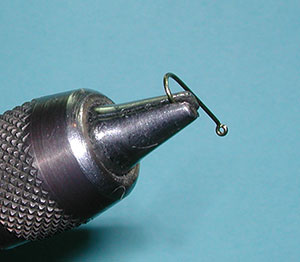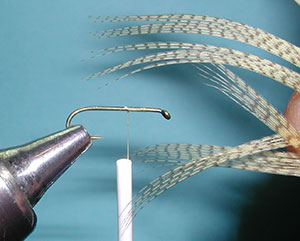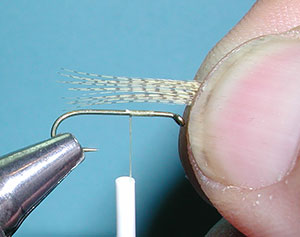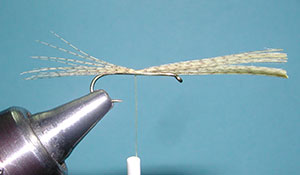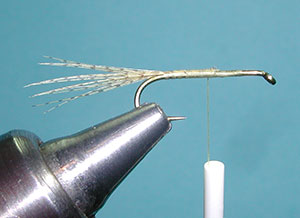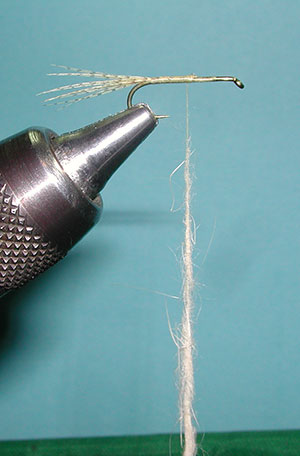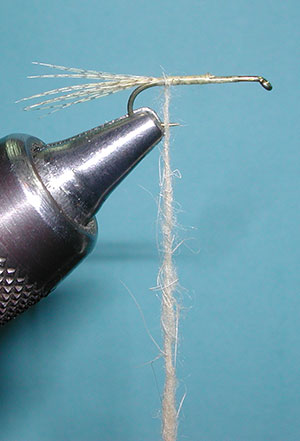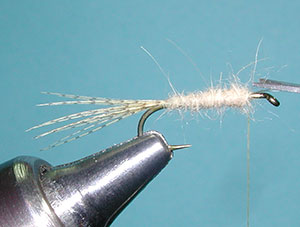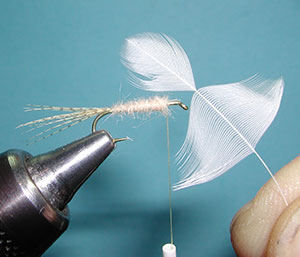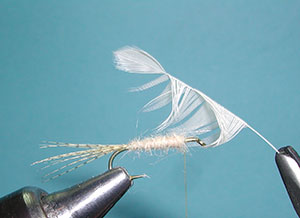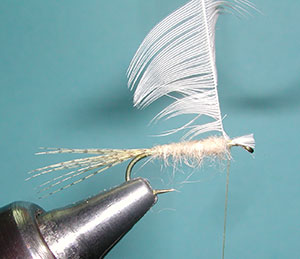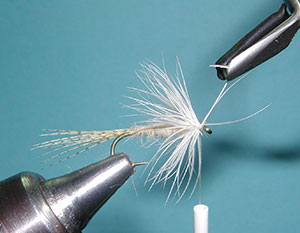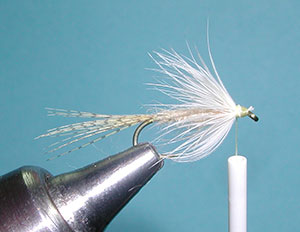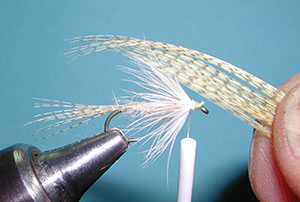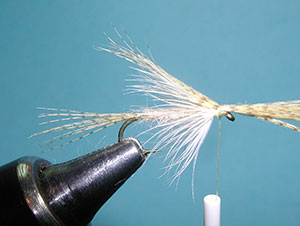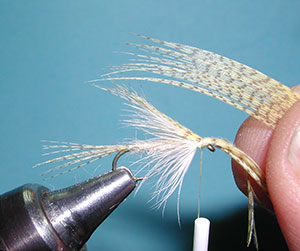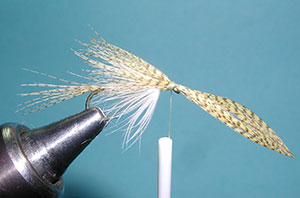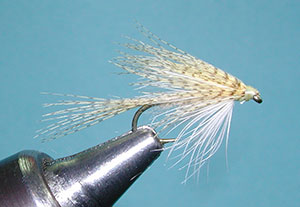Light Cahill (wet) – an unique event in history

Light Cahill
Tying Instructions
| Materials
to Order Material, click the link |
|
|---|---|
| Hook | TMC 5262 #12-16 |
| Thread | Veevus 10/0 Light Cahill |
| Body | Hareline #1 Light Cahill Dubbing |
| Tail | Dyed Mallard Flank fibers, Woodduck Gold |
| Wing | Dyed Mallard Flank, Woodduck Gold |
| Hackle | Splash 4B Hen Cape Hackle |
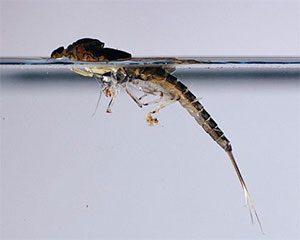
Light Cahill (Wet)
Dan Cahill of Port Jervis, N.Y. was a brakeman on the Erie and Lackawana Railroad in 1884. He was working in the Catskills on a hot and humid day. On board was a can of brood Rainbows destined for the Caledonia fish hatchery in upstate New York. A work train derailed in front of his train and Cahill knew that the Brood Trout would perish in the mid-summer heat.
Catskill Rainbows
Dan convinced his fellow crew members to help him take the heavy can of trout back to Calicoon Creek so that they might survive. The distance was a good mile but the trout not only survived but flourished with that little Catskill stream. As nature has a way, the offspring of that planting eventually spread throughout the Hudson River watershed. To this day, the ancestors of Cahill’s efforts provide some of the finest rainbow trout fishing in the east. Edward Hewitt was a fishing companion of Cahill and often told this story to his friends so that Cahill’s name remained within the lore of fly fishing history.
Cahill Fly
However, Cahill’s name is known to us from the fly pattern he designed. Ray Bergman wrote in Trout (1938), about the Light Cahill fly, “If it was necessary to confine my assortment of flies to only two or three, this would be one of them.” To many it is an Eastern fly but it has also found success in the Midwest, the Mountain states, and the Sierra of California. On Eastern waters the pattern is often tied with a 1X wet/nymph fly hook but on our Western waters the 2X wet fly hook, such as a TMC 5262, is more often used.
Dark Cahill
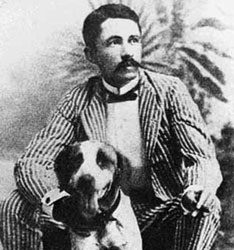
Theodore Gordon
The Dark Cahill is the pattern that was most often tied by Dan. He used it with great success on Brook trout. The Brown trout was still several years from being introduced to the United States. Theodore Gordon is often credited with creating the lighter version and altering the pattern as a wet fly. The light Cahill has gone through many transitions from a Ginger, to Cream, to Yellow, to White, and is thought to imitate the family of mayflies, Stenonema. The wet version actually became more popular than the dry and Dan Cahill would often credit another tier, such as Gordon, with the variation. However, the name, Cahill, stuck and and Dan Cahill’s name had a place in fly fishing history.
Light Cahill
The Light Cahill wet fly can look underwater like an egg-laying stage of a caddis or a drowned mayfly. During a mayfly hatch bigger fish would often wait below the surface along the edges of a pool’s main current, where these washed-under flies would concentrate. They’d generally do this early or late in the hatch. Or, they’d lie under a foam patch after the hatch was over, and pick up the stragglers. They didn’t have to expose themselves on the surface or waste too much energy rising to the top. They’d just lie there, and wait for another easy mouthful to drift along…
Whether or not they still do that I don’t know. Maybe you’ll have to go to your favorite river, look for the right conditions, and put a Cahill wet fly in front of them to find out.
Variations
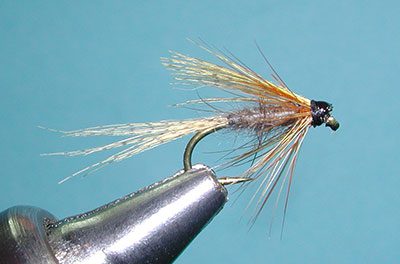
Dark Cahill
| Hook | TMC 3769 #12-16 |
| Thread | Veevus 8/0 Black |
| Body | Muskrat Dubbing |
| Tail | Dyed Mallard Flank fibers, Woodduck Gold |
| Wing | Dyed Mallard Flank, Woodduck Gold |
| Hackle | Light Ginger Hen Hackle |

